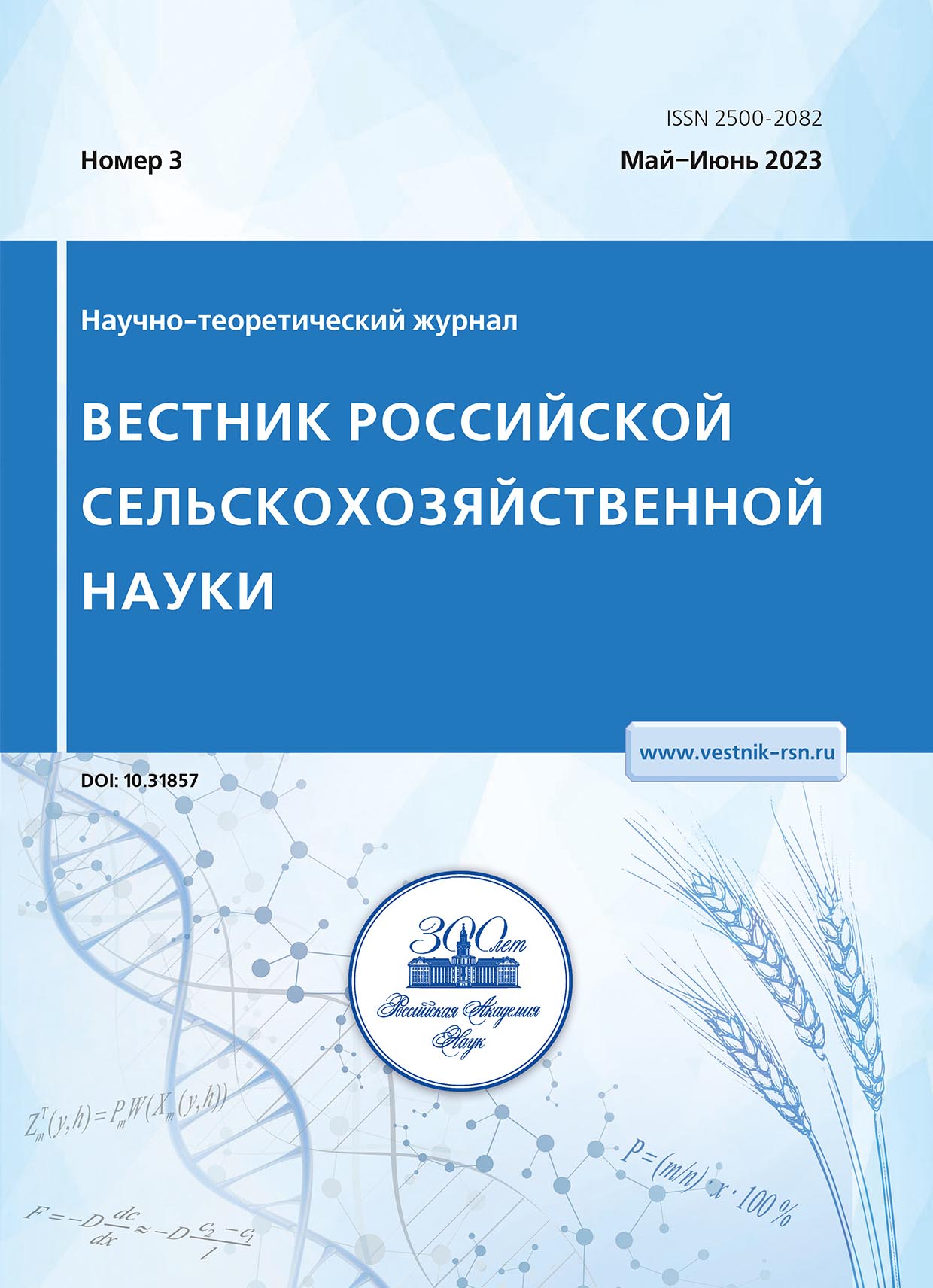EVALUATION OF THE PRODUCTIVITY OF OPEN GROUND CUCUMBERS ACCORDING TO THE ADAPTABILITY PARAMETERS IN THE MIDDLE AMUR REGION CONDITIONS
Abstract
The research was conducted in 2019-2021 in the Khabarovsk district of the Khabarovsk Territory in the open ground at the breading plot of the Vegetable Crops and Potato Department of the Far Eastern Agricultural Research Institute on the meadow-brown heavy loamy soils. The purpose of the research is to evaluate the variety samples of open–ground cucumber by yield and adaptability parameters in the conditions of the Middle Amur region. The material for the study were 15 variety samples of breeding by the Far Eastern Agricultural Research Institute. The meteorological conditions in the years of researches differed from the long-term average values, especially in the amount of precipitation. The hydrothermal conditions in the active growing season of cucumber in the summer months were characterized mainly by redundant humidification, hydrothermal coefficient = 2.1-5.4. The average annual yield of cucumber for three years was 21.4 t/ha. The level of the average yield varied from 17.1 to 27.2 t/ha. The indicator of quantitative variability on the trait of yield varied from insignificant V=0.75-5.80% to average V=11.11-12.43% variation. “Mig” variety sample and the variety samples № 1, 4, 5, 6, 9, 10 (bi=1.22-2.81) are among the varieties of the narrowly adaptive type (bi>1). “Khabar”, “Yerofey”, “Naslednik” variety samples and the variety samples № 2, 3, 7, 8, 11 are among the varieties of neutral or broadly adaptive type (bi<1). “Mig”, “Yerofey” variety samples and the variety samples № 1, 2, 3, 6, 10 (σ2d=0.002-0.187) turned out to be highly stable varieties capable to maintain an optimal level of yield in various soil and climatic conditions. According to the results of comprehensive assessment and ranking of data from 15 samples of open-ground cucumber according to the parameters of adaptability and stability and value of yield, the zoned “Mig”, “Khabar”, “Naslednik” variety samples and future variety samples № 1, 3, 7 (Σ Ranks =42-59) have shown up.
References
2. Gryaznov A.A. Karabal'skij yachmen' (korm, krupa, pivo). Kustanaj: Kustanajskij pechatnyj dvor, 1996. 448 s.
3. Demina E.A., Kincharov A.I., Taranova T.Yu., Chekmasova K.Yu. Ocenka adaptivnosti sortov yarovoj myagkoj pshenicy v lesostepnyh usloviyah Srednego Povolzh'ya// Agrarnyj vestnik Urala. 2021. № 11(214). S. 8-19. DOI: 10.32417/1997-4868-2021-214-11-8-19.
4. Decyna A.A., Illarionova I.V., Shcherbinina V.O. Ocenka ekologicheskoj plastichnosti i stabil'nosti krupnoplodnyh sortov podsolnechnika // Maslichnye kul'tury. 2019. Vyp. 3(179). S. 35–39. DOI: 10.25230/2412–608H–2019–3–179–35–39.
5. Dospekhov B.A. Metodika polevogo opyta (s osnovami statisticheskoj obrabotki rezul'tatov issledovanij). M.: Agropromizdat, 1985. 351 s.
6. Zvonkova I.Yu., Pavlenko V.N., Muhortova T.V. Effektivnost' vozdelyvaniya ogurcov v usloviyah svetlo-kashtanovyh pochv Nizhnego Povolzh'ya // Vestnik RGATU. 2017. № 3(35). S. 29-34.
7. Zykin V.A., Belan I.A., Rosseev V.M., Pashkov S.V. Selekciya yarovoj pshenicy na adaptivnost': rezul'taty i perspektivy // Doklady Rossijskoj akademii sel'skohozyajstvennyh nauk. 2000. № 2. S. 5–7.
8. Karaul'nyj D.V., Masterov A.S., Shevaldin I.N. Ocenka novyh sortov ozimoj pshenicy po kriteriyam adaptivnosti // Vestnik Belorusskoj gosudarstvennoj sel'skohozyajstvennoj akademii. 2016. № 3. S. 60-63.
9. Karaul'nyj D.V., Masterov A.S. Ocenka urozhajnosti sortov i gibridov ozimyh zernovyh kul'tur po parametram ekologicheskoj adaptivnosti v Severo-Vostochnoj chasti Belarusi // Vestnik Belorusskoj gosudarstvennoj sel'skohozyajstvennoj akademii. 2013. №1. S. 52-57.
10. Manukyan I.R., Basieva M.A., Miroshnikova E.S., Abiev V.B. Ocenka ekologicheskoj plastichnosti sortov ozimoj pshenicy v usloviyah predgornoj zony Central'nogo Kavkaza // Agrarnyj vestnik Urala. 2019. № 4(183). S. 20-26. DOI: 10.32417/article_5cf94f63b4d0f7.46300158.
11. Nikolaev P.N., Anis'kov N.I., Yusova O.A., Safonova I.V. Adaptivnost' urozhajnosti yarovogo ovsa v usloviyah Omskogo Priirtysh'ya // Trudy po prikladnoj botanike, genetike i selekcii. 2018. T. 179. Vyp. 4. S. 28–38. DOI: 10.30901/2227-8834-2019-28-38.
12. Nikolaev P.N., Yusova O.A., Vasyukevich V.S. i dr. Adaptivnyj potencial sortov ovsa selekcii Omskogo agrarnogo nauchnogo centra // Vestnik NGAU. 2019. № 1(50). S. 42–51. DOI: 10.31677/2072-6724-2019-50-1-42-51.
13. Noskov A.N., Batakova O.B., Korelina V.A. Sravnitel'naya ocenka gibridnyh form yarovogo yachmenya po urozhajnosti i adaptivnym svojstvam v usloviyah Severnogo regiona RF // Zemledelie. 2022. № 1. S. 35-38. DOI: 10.24412/0044-3913-2022-1-35-39.
14. Pavlenko V.N., Zvonkova I.Yu., Pavlenko V.I. Nauchnye osnovy sovremennyh tekhnologij vozdelyvaniya ogurca v yuzhnyh regionah Rossii // Prirodoobustrojstvo. 2018. № 1. S. 89-93. DOI: 10.26897/1997-6011/2018-1-89-93.


